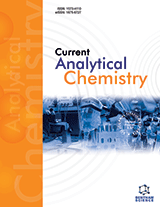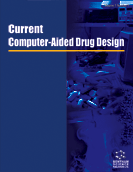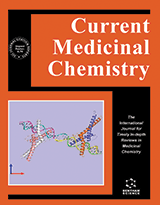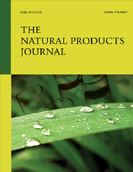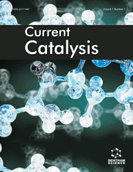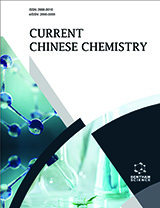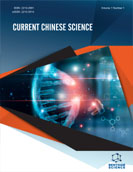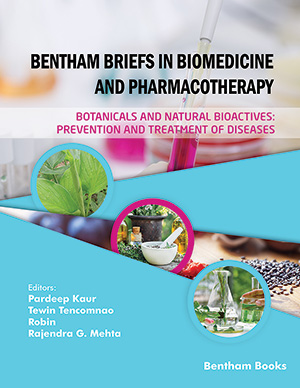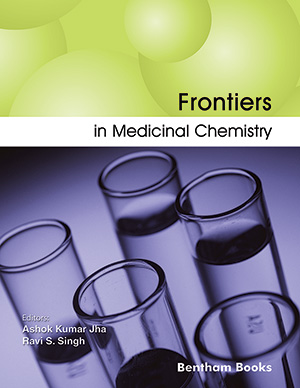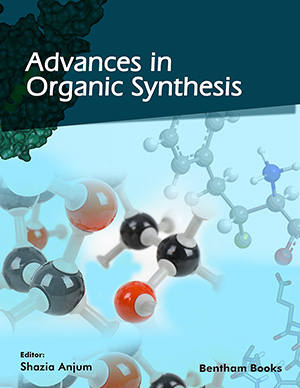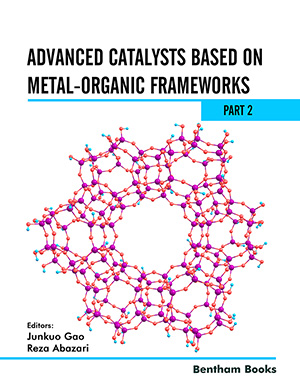Abstract
DNA mutation is the major cause of gene evolution. The variation of DNA sequence may result in genetic diseases, genotypes, single nucleotide polymorphism, and drug resistance of pathogens. Using biochip technologies, detection of mutations can be performed in parallel under identical conditions, hereby providing a solution to continuously increasing demands for large-scale genetic analysis. This article reviews the development of the biochips for mutation analysis. Features, limitations and applications of various principles are discussed.
Keywords: DNA mutations, Genetic diseases, Drug resistance, Biochip, Detection
Current Analytical Chemistry
Title: Biochips for Detection of DNA Mutations
Volume: 2 Issue: 3
Author(s): Li-Jun Bi, Xian-En Zhang, Ya-Feng Zhou and Jiao-Yu Deng
Affiliation:
Keywords: DNA mutations, Genetic diseases, Drug resistance, Biochip, Detection
Abstract: DNA mutation is the major cause of gene evolution. The variation of DNA sequence may result in genetic diseases, genotypes, single nucleotide polymorphism, and drug resistance of pathogens. Using biochip technologies, detection of mutations can be performed in parallel under identical conditions, hereby providing a solution to continuously increasing demands for large-scale genetic analysis. This article reviews the development of the biochips for mutation analysis. Features, limitations and applications of various principles are discussed.
Export Options
About this article
Cite this article as:
Bi Li-Jun, Zhang Xian-En, Zhou Ya-Feng and Deng Jiao-Yu, Biochips for Detection of DNA Mutations, Current Analytical Chemistry 2006; 2 (3) . https://dx.doi.org/10.2174/157341106777698242
| DOI https://dx.doi.org/10.2174/157341106777698242 |
Print ISSN 1573-4110 |
| Publisher Name Bentham Science Publisher |
Online ISSN 1875-6727 |
Call for Papers in Thematic Issues
Advancements in biomedicine, corrosion inhibition/monitoring, and lubrication of carbon dots
Carbon dots, a class of carbon-based nanomaterials, have garnered substantial interest in various scientific and engineering fields due to their unique properties, including excellent optical properties, outstanding biocompatibility, easy preparation, good dispersity, ultrasmall size, low toxicity and environmental friendliness. This special issue of Current Analytical Chemistry aims to showcase cutting-edge ...read more
Advances in Microfluidic and Sensing Technologies of Biofluids.
Detection of biological fluids is an important means to assess human health and diagnose diseases. Currently, research on blood is relatively mature and widely applied in the medical field. With the development and advancement of microfluidic technology and novel detection methods, attention has turned to human physiological fluids such as ...read more
Analytical methods for environmental and food analysis
In recent years, the study of the chemical composition of food and the environment depends on analytical methods in order to acquire information about the chemical composition, processing, quality control and contamination of soil, water, air, plants and foods, aspects very important for food safety and environmental quality control. There ...read more
Applications of artificial intelligence in chemical analysis
Artificial intelligence (AI) has demonstrated its versatility in almost all scientific fields, especially analytical chemistry, which is leading the way in the integration of AI. According to Chemical Abstract Services, one of the major disciplines contributing to AI-related publications and patents is analytical chemistry. That?s because techniques such as deep ...read more
 6
6
- Author Guidelines
- Graphical Abstracts
- Fabricating and Stating False Information
- Research Misconduct
- Post Publication Discussions and Corrections
- Publishing Ethics and Rectitude
- Increase Visibility of Your Article
- Archiving Policies
- Peer Review Workflow
- Order Your Article Before Print
- Promote Your Article
- Manuscript Transfer Facility
- Editorial Policies
- Allegations from Whistleblowers
Related Articles
-
Bifunctional Anti-HIV/TB Inhibitors: Perspective from In-Silico Design and Molecular Dynamics Simulations
Letters in Drug Design & Discovery Dry Powder Formulation of Plasmid DNA and siRNA for Inhalation
Current Pharmaceutical Design The Endoplasmic Reticulum Alpha-Glycosidases as Potential Targets for Virus Control
Current Protein & Peptide Science Current Technology in the Discovery and Development of Novel Antibacterials
Current Drug Targets Synthesis, Spectroscopic, In-vitro and Computational Analysis of Hydrazones as Potential Antituberculosis Agents: (Part-I)
Combinatorial Chemistry & High Throughput Screening Catheter Related Line Sepsis Resulting from Mycobacterium <i>chelonae</i> Infection in an Immunocompromised Host
Infectious Disorders - Drug Targets Advancement Towards Tin-based Anticancer Chemotherapeutics: Structural Modification and Computer Modeling Approach to Drug-Enzyme Interactions
Current Topics in Medicinal Chemistry Graphical Abstracts:
Letters in Drug Design & Discovery Evidence-Based Management of Infertile Couples with Repeated Implantation Failure Following IVF
Current Women`s Health Reviews Synthesis and Biological Activity of Chiral Dihydropyrazole: Potential Lead for Drug Design
Mini-Reviews in Medicinal Chemistry Mood Stabilizers, Oxidative Stress and Antioxidative Defense in Euthymia of Bipolar Disorder
CNS & Neurological Disorders - Drug Targets Antimicrobial Peptide Structure and Mechanism of Action: A Focus on the Role of Membrane Structure
Current Topics in Medicinal Chemistry Biopharmaceutics, Pharmacokinetics and Pharmacodynamics of Antituberculosis Drugs
Current Medicinal Chemistry Entropy Model for Multiplex Drug-Target Interaction Endpoints of Drug Immunotoxicity
Current Topics in Medicinal Chemistry Transcription Factors in Autoimmune Diseases
Current Pharmaceutical Design Tubercidin and Related Analogues: An Inspiration for 50 years in Drug Discovery
Current Organic Chemistry Nanotechnology Versus other Techniques in Improving Drug Dissolution
Current Pharmaceutical Design Synthesis of Triazole Derivatives Manifesting Antimicrobial and Anti-Tubercular Activities
Mini-Reviews in Organic Chemistry Antistaphylococcal Activity of Novel Salicylanilide Derivatives
Current Drug Discovery Technologies Structure-based Discovery of Novel Antibacterials
Anti-Infective Agents in Medicinal Chemistry


